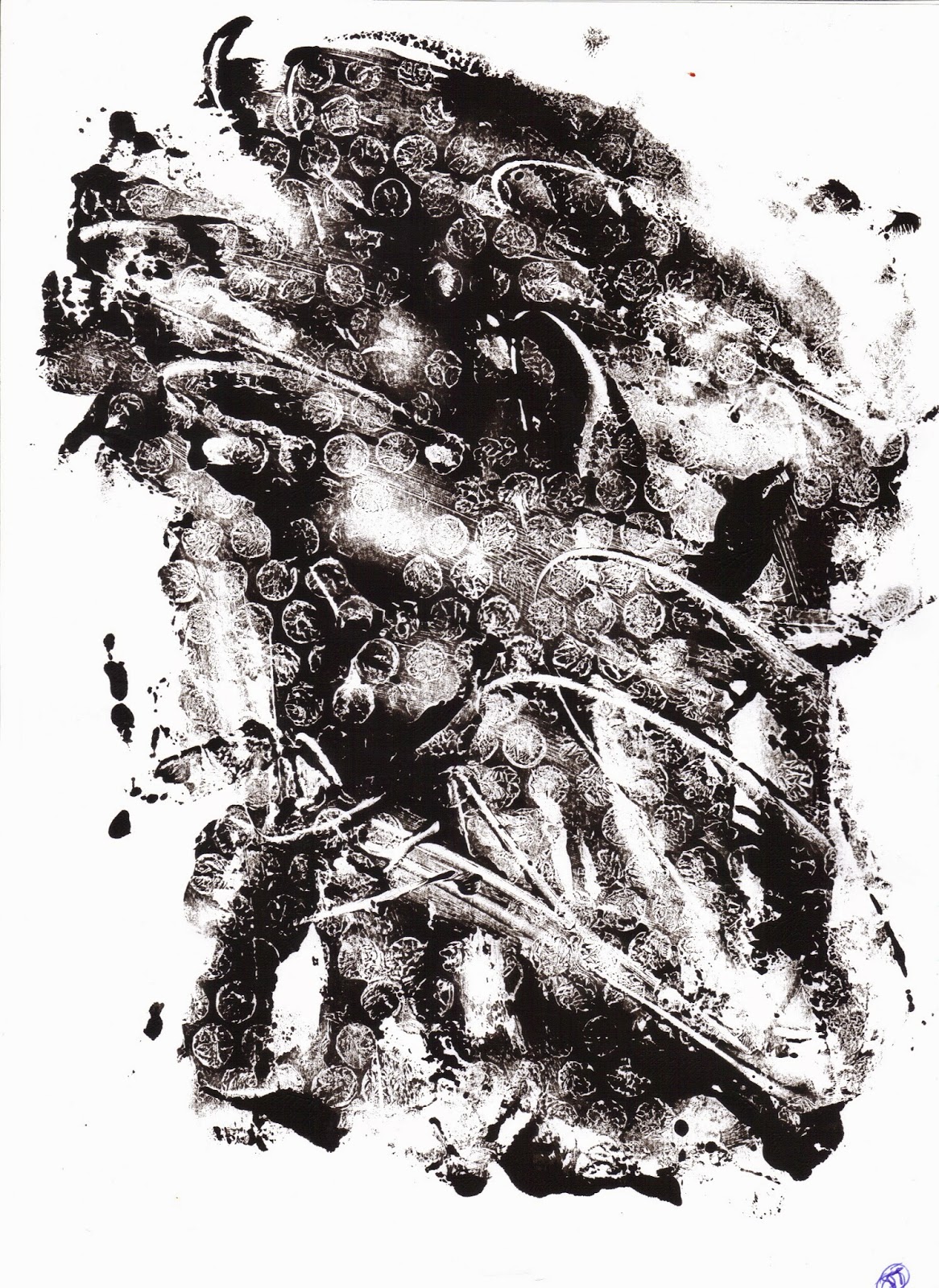INK MARKS: The following patterned papers were created using black Quink ink and a variety of tools as 'paint brushes' to make marks, including cotton buds to make dots and lines, scrunched up kitchen paper, edge of credit card, bottle top, end of kitchen roll tube, half the end of a cardboard tube, bubble wrap, corrogated card board, tip of credit card, and edge of corrogated cardboard. Marks were made by dragging, dabbing, dotting, swivelling and drawing.
BLEACH MARKS:
Quink inked cartridge paper, cotton bud dipped in household bleach, then dabbed and dragged over paper.
Edge of credit card dipped in household bleach and dragged across black tissue paper.
'Painted' lines with cotton bud dipped in bleach, followed by dragging tip of bleach dipped credit card across inked cartridge paper. Really like the effect of this paper.
Edge of credit card dipped in household bleach and dragged across black tissue paper.
Bottom of kitchen roll dipped in bleach and stamped on black tissue paper.
Empty medicine pill blister dipped in saucer of bleach and stamped on to inked cartridge paper, with some dragging of bleached credit card tip across page.
MONOPRINTS: To create the following set of monoprints I used black Windsor and Newton Designers Gouache, spreading it on to a glass pane (a shelf from an old fridge!). I 'drew' the patterns using a variety of 'tools', including cotton buds, bubble wrap stamped down as well as scrunched up and dragged, edge of palette knife, corrogated cardboard, and edge of kitchen roll tube.

.jpeg)
.jpeg)
.jpeg)


















































